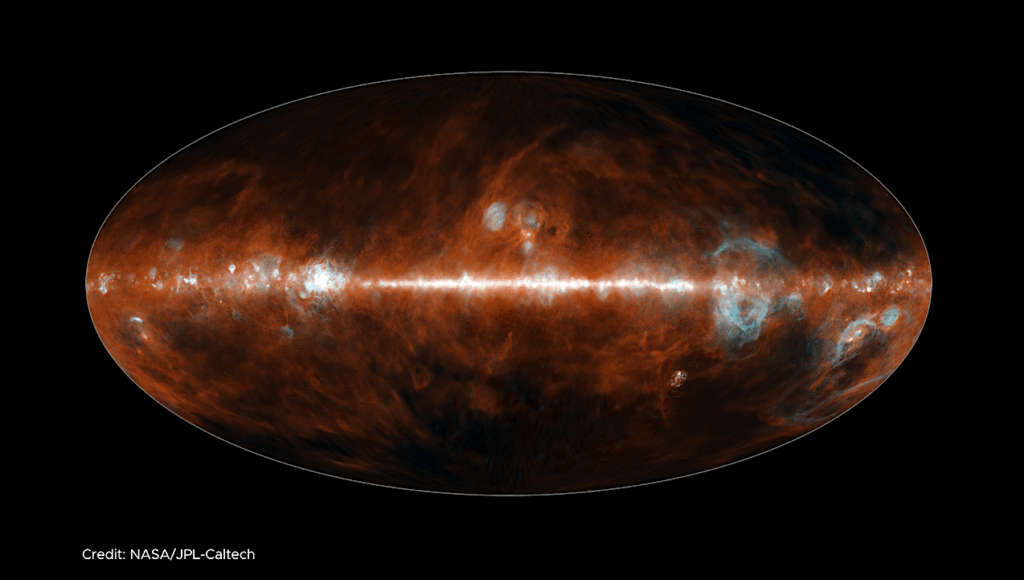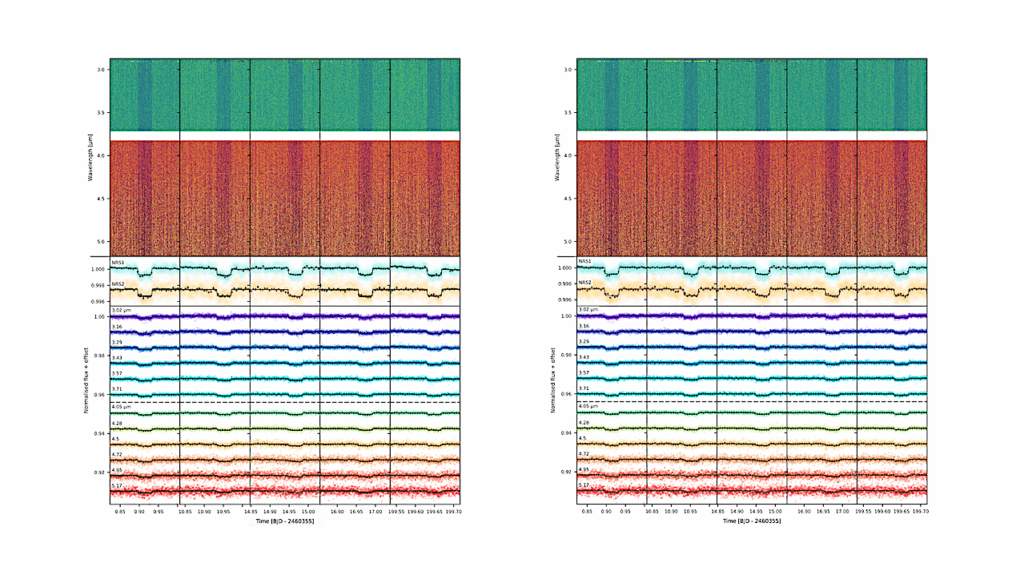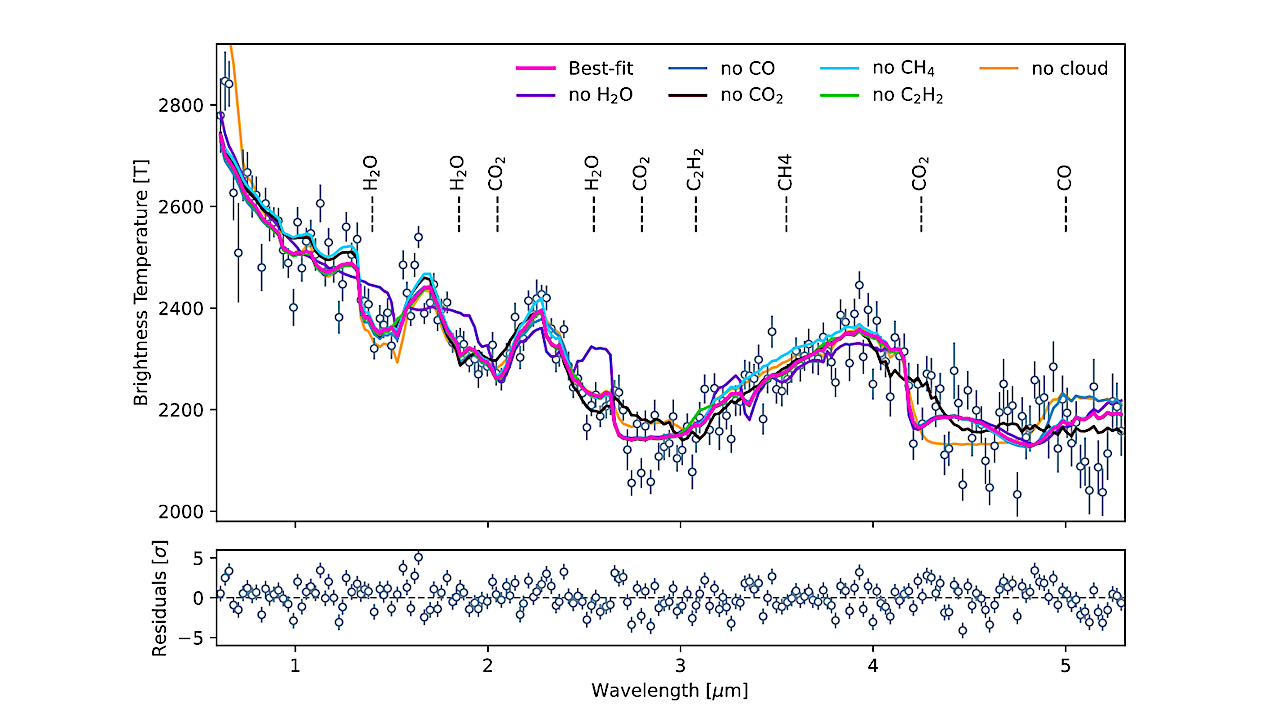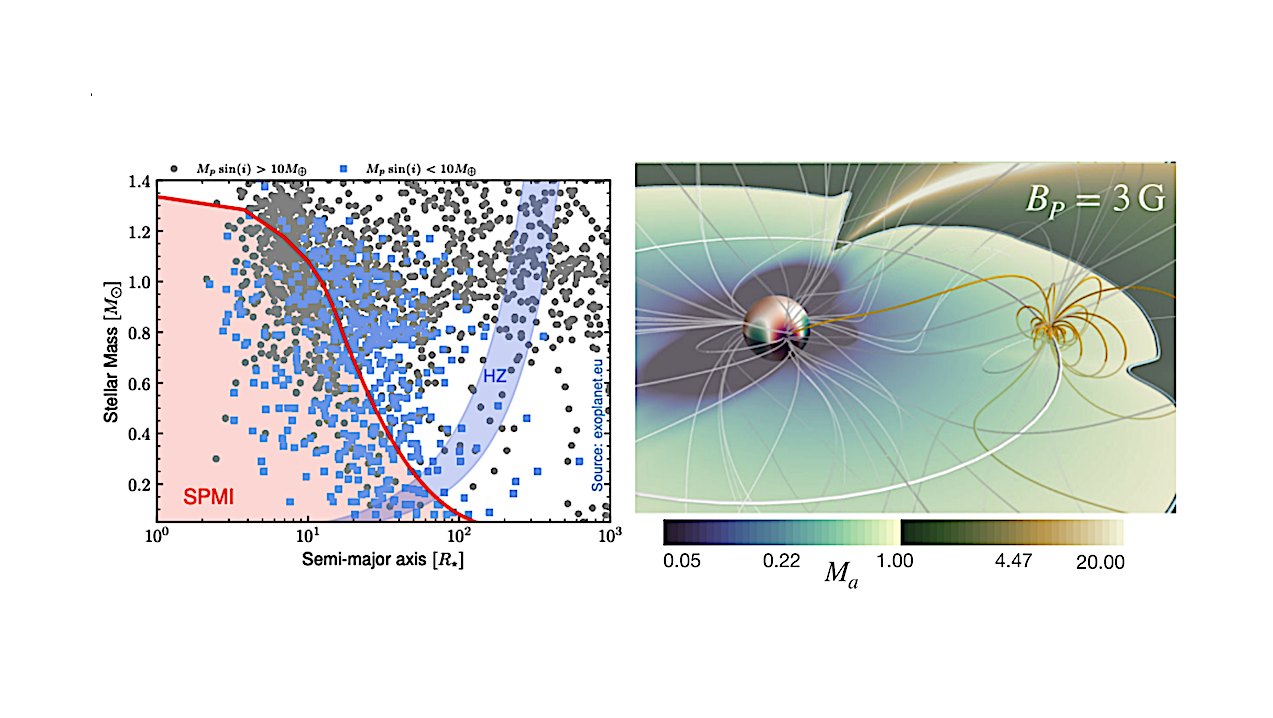Now Reading: The 3D Cosmic Shoreline For Nurturing Planetary Atmospheres
-
01
The 3D Cosmic Shoreline For Nurturing Planetary Atmospheres
The 3D Cosmic Shoreline For Nurturing Planetary Atmospheres
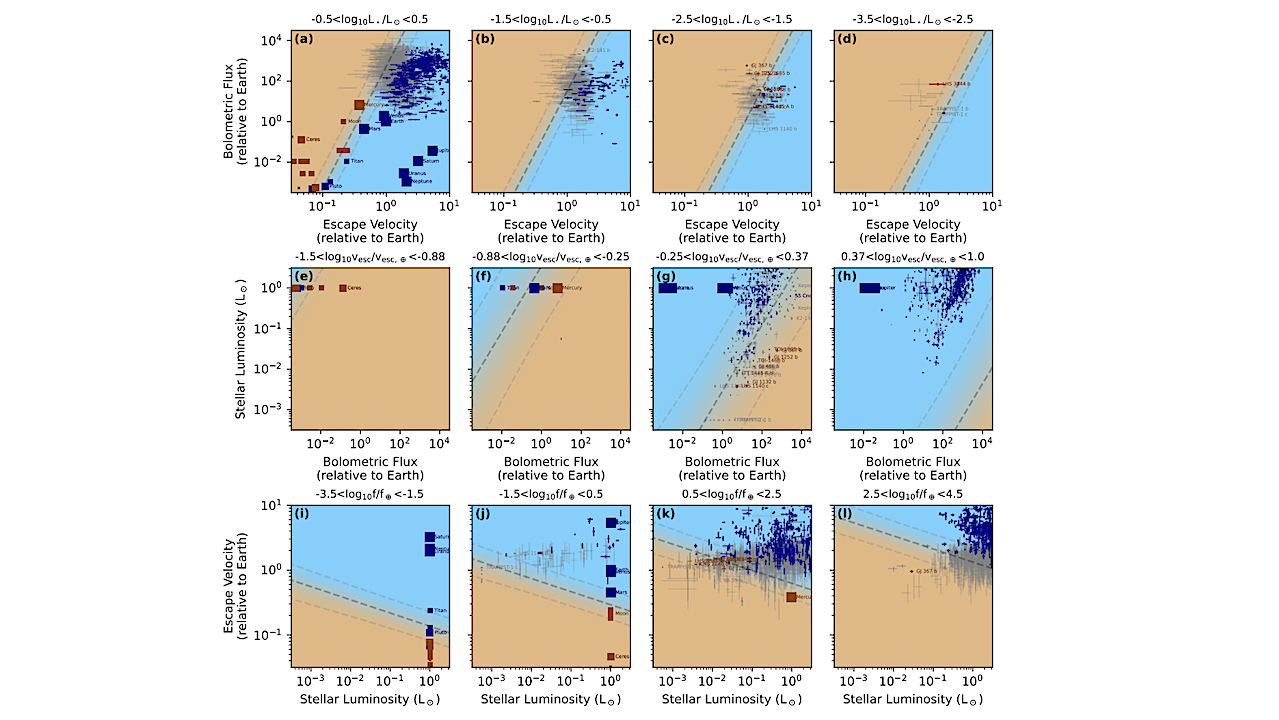
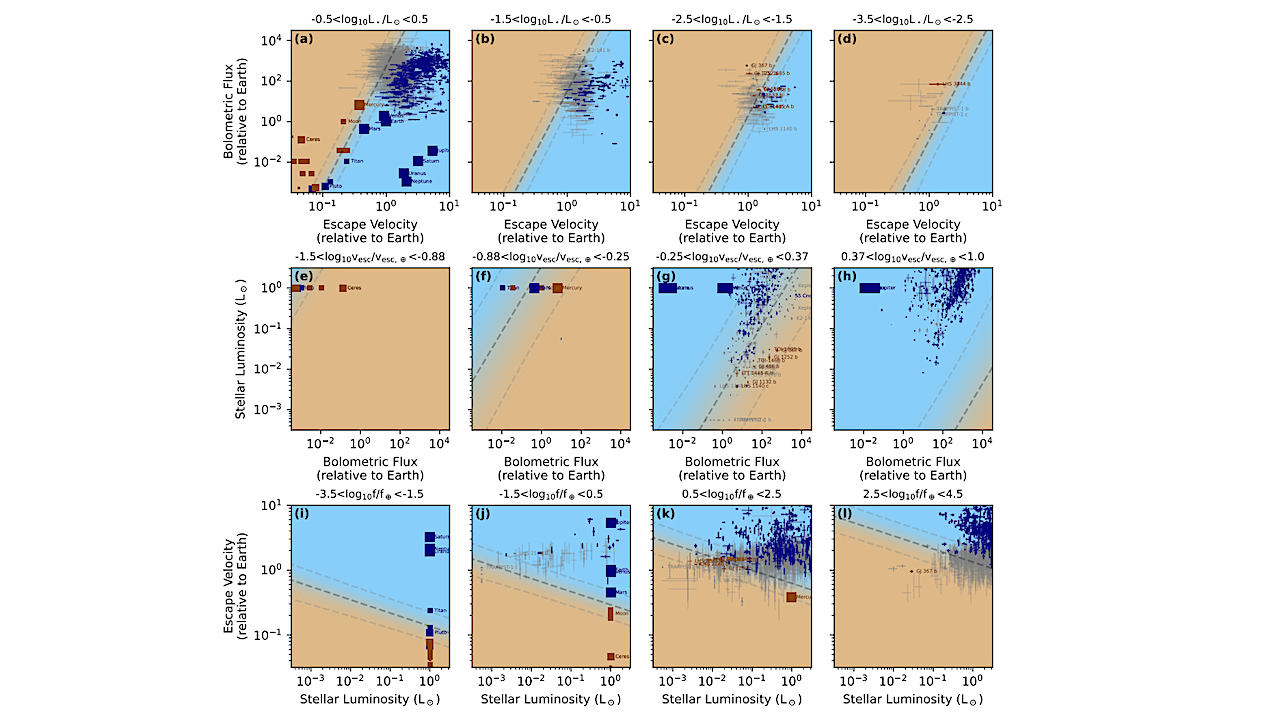
A cosmic shoreline dividing exoplanets (errorbars) and Solar System planets (squares) with any type of atmosphere or global surface volatiles (blue symbols, Ai = 1) from those without (brown symbols, Ai = 0). Planets without definitive atmosphere constraints are shown for context (gray symbols, Ai =?). The shoreline defines a plane in the 3D space of (f, vesc, L); each row shows slices that consider a narrow range of stellar luminosity (top), planet escape velocity (middle), and planet flux (bottom). Background colors indicate the modeled probability of an atmosphere at each location (sandy brown for pi = 0, water blue for pi = 1), accounting for the intrinsic width of the shoreline and marginalizing over the parameter uncertainties and the width of the slice; contours (dashed lines) highlight atmosphere probabilities of 5%, 50%, 95% (). — astro-ph.EP
Various “cosmic shorelines” have been proposed to delineate which planets have atmospheres. The fates of individual planet atmospheres may be set by a complex sea of growth and loss processes, driven by unmeasurable environmental factors or unknown historical events.
Yet, defining population-level boundaries helps illuminate which processes matter and identify high-priority targets for future atmospheric searches. Here, we provide a statistical framework for inferring the position, shape, and fuzziness of an instellation-based cosmic shoreline, defined in the three-dimensional space of planet escape velocity, planet bolometric flux received, and host star luminosity; explicitly including luminosity partially circumvents the need to estimate host stars’ historical X-ray and extreme ultraviolet fluences.
Using Solar System and exoplanet atmospheric constraints, under the restrictive assumption that one planar boundary applies across a wide parameter space, we find the critical flux threshold for atmospheres scales with escape velocity with a power-law index of p=6.08+0.69−0.48, steeper than the canonical literature slope of p=4, and scales with stellar luminosity with a power-law index of q=1.25+0.31−0.22, steep enough to disfavor atmospheres on Earth-sized planets out to the habitable zone for stars less luminous than log10(L⋆/L⊙)=−2.22±0.21 (roughly spectral type M4.5V).
If we relax the assumption that one power law must stretch from the hottest exoplanets to the coolest Solar System worlds, the narrower question of “Which warm planets have thick CO2 secondary atmospheres?” is still poorly constrained by data but should improve significantly with planned JWST observations.
Zach K. Berta-Thompson, Patcharapol Wachiraphan, Catriona Murray
Comments: Submitted to ApJL. Comments (including missing/incorrect atmosphere constraints) are very welcome!
Subjects: Earth and Planetary Astrophysics (astro-ph.EP); Instrumentation and Methods for Astrophysics (astro-ph.IM); Solar and Stellar Astrophysics (astro-ph.SR)
Cite as: arXiv:2507.02136 [astro-ph.EP] (or arXiv:2507.02136v1 [astro-ph.EP] for this version)
https://doi.org/10.48550/arXiv.2507.02136
Focus to learn more
Submission history
From: Zach K. Berta-Thompson
[v1] Wed, 2 Jul 2025 20:47:41 UTC (2,808 KB)
https://arxiv.org/abs/2507.02136
Astrobiology
Stay Informed With the Latest & Most Important News
Previous Post
Next Post
-
 01From Polymerization-Enabled Folding and Assembly to Chemical Evolution: Key Processes for Emergence of Functional Polymers in the Origin of Life
01From Polymerization-Enabled Folding and Assembly to Chemical Evolution: Key Processes for Emergence of Functional Polymers in the Origin of Life -
 02Panasonic Leica Summilux DG 15mm f/1.7 ASPH review
02Panasonic Leica Summilux DG 15mm f/1.7 ASPH review -
 03How New NASA, India Earth Satellite NISAR Will See Earth
03How New NASA, India Earth Satellite NISAR Will See Earth -
 04And Thus Begins A New Year For Life On Earth
04And Thus Begins A New Year For Life On Earth -
 05Astronomy Activation Ambassadors: A New Era
05Astronomy Activation Ambassadors: A New Era -
06SpaceX launch surge helps set new global launch record in 2024
-
 07Two Black Holes Observed Circling Each Other for the First Time
07Two Black Holes Observed Circling Each Other for the First Time













